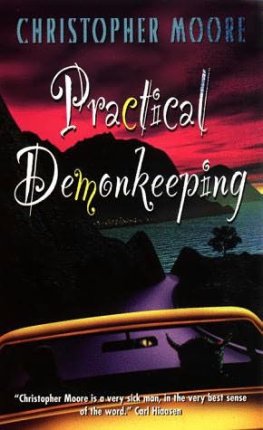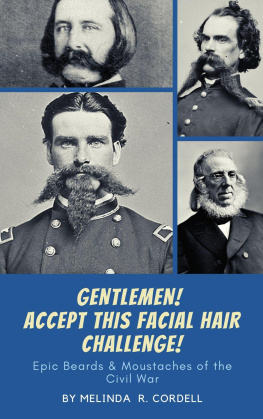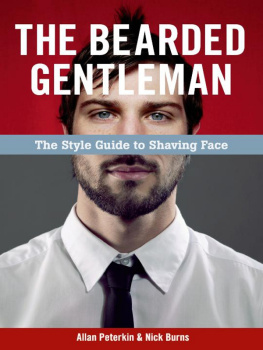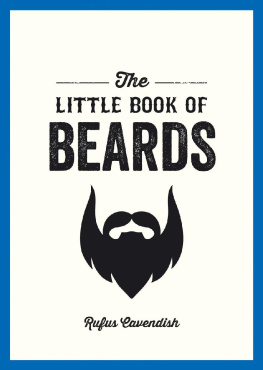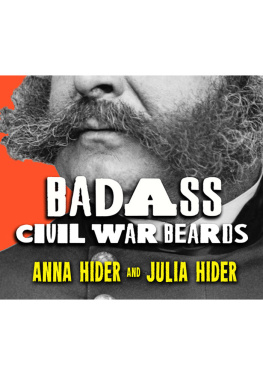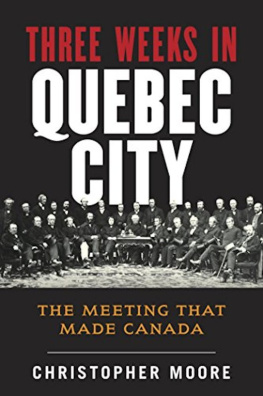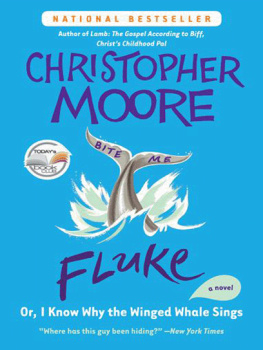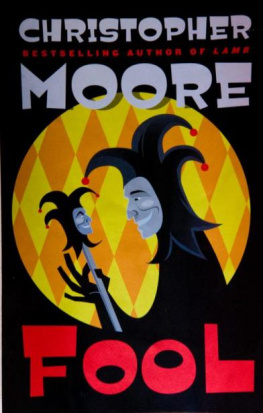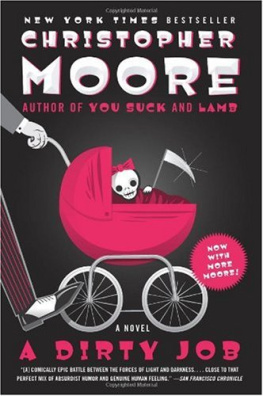Christopher Oldstone-Moore - Of Beards and Men: The Revealing History of Facial Hair
Here you can read online Christopher Oldstone-Moore - Of Beards and Men: The Revealing History of Facial Hair full text of the book (entire story) in english for free. Download pdf and epub, get meaning, cover and reviews about this ebook. year: 2015, publisher: University of Chicago Press, genre: History. Description of the work, (preface) as well as reviews are available. Best literature library LitArk.com created for fans of good reading and offers a wide selection of genres:
Romance novel
Science fiction
Adventure
Detective
Science
History
Home and family
Prose
Art
Politics
Computer
Non-fiction
Religion
Business
Children
Humor
Choose a favorite category and find really read worthwhile books. Enjoy immersion in the world of imagination, feel the emotions of the characters or learn something new for yourself, make an fascinating discovery.

- Book:Of Beards and Men: The Revealing History of Facial Hair
- Author:
- Publisher:University of Chicago Press
- Genre:
- Year:2015
- Rating:4 / 5
- Favourites:Add to favourites
- Your mark:
- 80
- 1
- 2
- 3
- 4
- 5
Of Beards and Men: The Revealing History of Facial Hair: summary, description and annotation
We offer to read an annotation, description, summary or preface (depends on what the author of the book "Of Beards and Men: The Revealing History of Facial Hair" wrote himself). If you haven't found the necessary information about the book — write in the comments, we will try to find it.
Of Beards and Men: The Revealing History of Facial Hair — read online for free the complete book (whole text) full work
Below is the text of the book, divided by pages. System saving the place of the last page read, allows you to conveniently read the book "Of Beards and Men: The Revealing History of Facial Hair" online for free, without having to search again every time where you left off. Put a bookmark, and you can go to the page where you finished reading at any time.
Font size:
Interval:
Bookmark:
CHRISTOPHER OLDSTONE-MOORE
THE UNIVERSITY OF CHICAGO PRESS
CHICAGO AND LONDON
Christopher Oldstone-Moore is a senior lecturer in history at Wright State University in Dayton, Ohio.
The University of Chicago Press, Chicago 60637
The University of Chicago Press, Ltd., London
2016 by Christopher Oldstone-Moore
All rights reserved. Published 2015.
Printed in the United States of America
24 23 22 21 20 19 18 17 16 15 1 2 3 4 5
ISBN-13: 978-0-226-28400-2 (cloth)
ISBN-13: 978-0-226-28414-9 (e-book)
DOI: 10.7208/chicago/9780226284149.001.0001
Library of Congress Cataloging-in-Publication Data
Oldstone-Moore, Christopher, 1962 author.
Of beards and men : the revealing history of facial hair / Christopher Oldstone-Moore.
pages ; cm
Includes bibliographical references and index.
ISBN 978-0-226-28400-2 (cloth : alk. paper)
ISBN 978-0-226-28414-9 (ebook)
1. BeardsHistory. 2. MustachesHistory. 3. MenSocial life and customs. I. Title.
GT2320.O43 2015
391.5dc23
2015010764
This paper meets the requirements of ANSI / NISO Z39.48-1992 (Permanence of Paper).
Dedicated to
JENNIFER
and
CAROLINE , AILEEN , AND MARILEE
with love beyond words
The cornpone prophets of Duck Dynasty and the whiskery Boston Red Sox grabbed headlines, as did the crimes of Amish beard-cutting rogues, a kerfuffle over a BBC presenters facial fuzz, the campaign of Sikhs in the US Army to overturn its beard ban, and the revival of mustaches in France and Turkey, not to mention increased observance of MovemberMustache November.
Is this the dawn of a new era or just another bump in the road? Only time will tell. One thing is certain: changes in facial hair are never simply a matter of fashion. The power of beards and mustaches to make personal and political statements is such that, even in the land of the free, they are subject to administrative and corporate control. That Americans do not have a legal right to grow beards or mustaches as they choose was confirmed by the Supreme Courts 1976 ruling in Kelley v. Johnson, which upheld employers authority to dictate grooming standards to their employees. Such infringements of freedom are a strong hint that something more than style is at stake. In fact, beard history fails to reveal fashion cycles at all, presenting instead slower, seismic shifts dictated by deeper social forces that shape and reshape ideals of manliness. Whenever masculinity is redefined, facial hairstyles change to suit. The history of men is literally written on their faces.
Judith Butler, one of the luminaries of gender studies, has argued that our words, actions, and bodies are not simply expressions of ourselves; they are the way we form ourselves as men and women. Our identities, in other words, are made and remade by what we do and say. In this sense, cutting or shaping facial hair has always been an important means not just to express manliness but to be men. Society enforces approved forms of masculine personality by regulating facial hair. We arrive, then, at the first principle of beard history: the face is an index of variations in manliness. As religions, nations, and movements formulate specific values and norms, they deploy hair, as well as other symbols, to proclaim these ideals to the world. When disputes arise about contrasting models of masculinity, different treatments of facial hair may indicate where ones loyalties lie.
The idea that facial hair is a matter of personal choice remains popular despite abundant evidence to the contrary. Choosing to wear a beard in modern America, for example, can still get you drummed out of the military, fired from a job, disqualified in a boxing match, eliminated from political contention, or even labeled a terrorist. This reality relates to the second principle of beard history: facial hair is political. Because ideas of proper manliness are bound up with social and political authority, any symbol of masculinity carries political and moral significance. This explains why facial hair has the power to outrage and why it is subject to social controls.
Another misconception holds that shaving or not shaving is a matter of convenience, and that developments in razor technology explain the prevalence of smooth chins over the past century. The truth is quite different. Shaving is as old as civilization itself, and the absence of modern conveniences has never prevented societies from taking advantage of the symbolic power of removing hair. We arrive, then, at the third principle of beard history: the language of facial hair is built on the contrast of shaved and unshaved. Using this basic distinction, and its many variations, Western societies have constructed a visual vocabulary of personality and social allegiance.
History teaches us to be cautious about declaring the current beard trend the dawn of a new era. A few star athletes and Hollywood extroverts notwithstanding, a smooth face is still very much the norm. The popularity of beard clubs proves it. They thrive on the proposition that growing a beard or mustache is an adventurous thing to do. In fact, substantial changes in facial hair norms are rare in history, and when they do happen, they are signs of significant historical shifts. We should, then, bear in mind a fourth principle of beard history: understanding the forces shaping the male face requires the long view. Historians who focus on one place and time may miss the larger picture that emerges over many centuries. Beard history is like a mosaic: the image becomes sharper the further back one stands.
All of these dimensions can be seen in the example of Alexander the Great, who changed the course of Western civilization and also the face of masculine respectability. By conquering Egypt and Persia, Alexander made himself and his fellow Greek-speakers masters of the known world. Yet he chose a lookportraits, statues, and coins depict him as youthful and clean-shaventhat was widely disparaged in Greek tradition as unmanly. Why would he do so? More to the point, why did respectable Greek and Roman men enthusiastically emulate him for the next four hundred years? The answer is that he viewed himself as a demigod and wished to look the part. Because the artists of his day depicted mythic heroes like Achilles and Heracles as eternally youthful and beardless, he shaved himself and encouraged his followers to do the same. He was very persuasive. In classical times, elite menor lesser men who aspired to greater honoradopted Alexanders style to imply something heroic in themselves. It was not a fad or fashion trend but powerful symbolism. Only after many prosperous centuries for ancient barbers did an alternate philosophy of masculine honor arise, finally breaking the power of the shaven ideal.
Each chapter in this book describes a distinct era in beard history, from the emergence of great cities in Mesopotamia and Egypt to the rise of the smooth-skinned metrosexual in our own time. In the twenty-three centuries since Alexander set the precedent, shaving has been the default mode of masculine style, punctuated by four great beard movements. The first, initiated by the Roman emperor Hadrian in the second century, persisted for about a hundred years. The second, in the High Middle Ages, saw kings, nobles, and knights complementing their armored splendor with full beards. This movement, however, was incomplete. Churchmen shaved, especially after the eleventh century, when they were positively required to do so by canon law. This was part of the churchs deliberate effort to define its own brand of manhood, with its own special claims to spiritual and political authority. This hair dualism dissolved by the late fourteenth century, however, when laymen adopted the clergys shaven style. The Renaissance generated a third beard movement, inspired in great measure by opposition to medieval churchly values and styles. The fourth and final outgrowth of beards was comparatively brief, spanning just the latter half of the nineteenth century. In this talkative and rather more self-conscious era, men did not hide their aspiration to fashion a new masculinity for the modern world.
Font size:
Interval:
Bookmark:
Similar books «Of Beards and Men: The Revealing History of Facial Hair»
Look at similar books to Of Beards and Men: The Revealing History of Facial Hair. We have selected literature similar in name and meaning in the hope of providing readers with more options to find new, interesting, not yet read works.
Discussion, reviews of the book Of Beards and Men: The Revealing History of Facial Hair and just readers' own opinions. Leave your comments, write what you think about the work, its meaning or the main characters. Specify what exactly you liked and what you didn't like, and why you think so.

